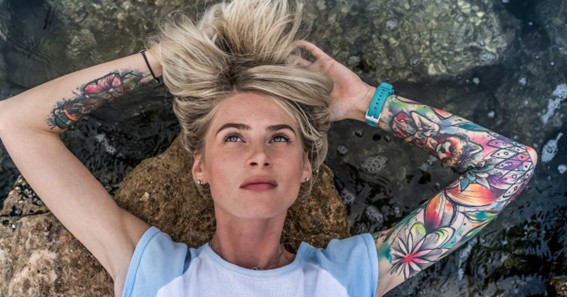Like the artistic work that enlivened its elaborate creation, watercolor tattoos are commonly gorgeous, natural, elegant plays of variety that utilize the skin as a material. Instead of being recently settled, the pattern has seen a lift because of specialists who keep on taking the excellence, strategies and ideas higher than ever creativity. In this aid, we research the beginnings and strategies found in the watercolor style.
We likewise analyze the issue of treatment and maturing of liquid-shaded pieces.
Beginning Of Watercolor Tattoo
The genuine kind of painting watercolor tattoo stem is essentially crude. In old times all shades for painting were produced using natural materials including substances from the earth like plants, minerals, creatures, consumed bones, etc. The primary instances of watercolor painting can really be tracked down in Paleolithic cavern works of art, albeit the principal modern utilization of the medium is frequently viewed as the Egyptian papyrus scrolls. Later used to enlighten compositions in the Medieval times, watercolor painting didn’t see steady and far and wide use until the Renaissance.
It ought to shock no one that because of the regular mixtures of watercolor shades it would be appropriate for naturalistic works of art. The paints were moderately simple to utilize, extremely adaptable, and voyaged well. Albeit this might sound totally separated from the contemporary watercolor tattoo style, the methods and elaborate methodology are like numerous specialists working in that specific period. Craftsmen, for example, Thomas Gainsborough, JMW Turner, John James Audubon, Thomas Eakins, John Vocalist Commander, and Eugène Delacroix are only a portion of the painters who involved watercolor and moved it to stand as a serious craftsmanship material. A large number of the abilities utilized by these fine craftsmen are really utilized by watercolor tattooists too, as the medium and methods make an interpretation effective to application on the skin.
Tattoo streak is frequently painted with watercolor as well as gouache, which is a more hazy type of the above paint. The majority of the watercolor tattoos we see today are made with a dynamic and wide range of varieties, yet this was not generally the situation. Limitations on the essential shades of red, blue, yellow, and green were in many cases generally old-school tattooers needed to work with when blaze and current inking were making advances. These colors are best on paper as well as on the skin.
During the late nineteenth and mid-twentieth hundreds of years, the tattoo streak was getting out and about internationally through paddlers, mariners, and specialists. There was a tremendous interest in new and imaginative plans, as well as a hotspot for tattooers to share their portfolios. The watercolor streak was the fastest and most straightforward method for making it happen, many glimmer sheets from those periods actually exist and rouse the watercolor tattoos we see today.
